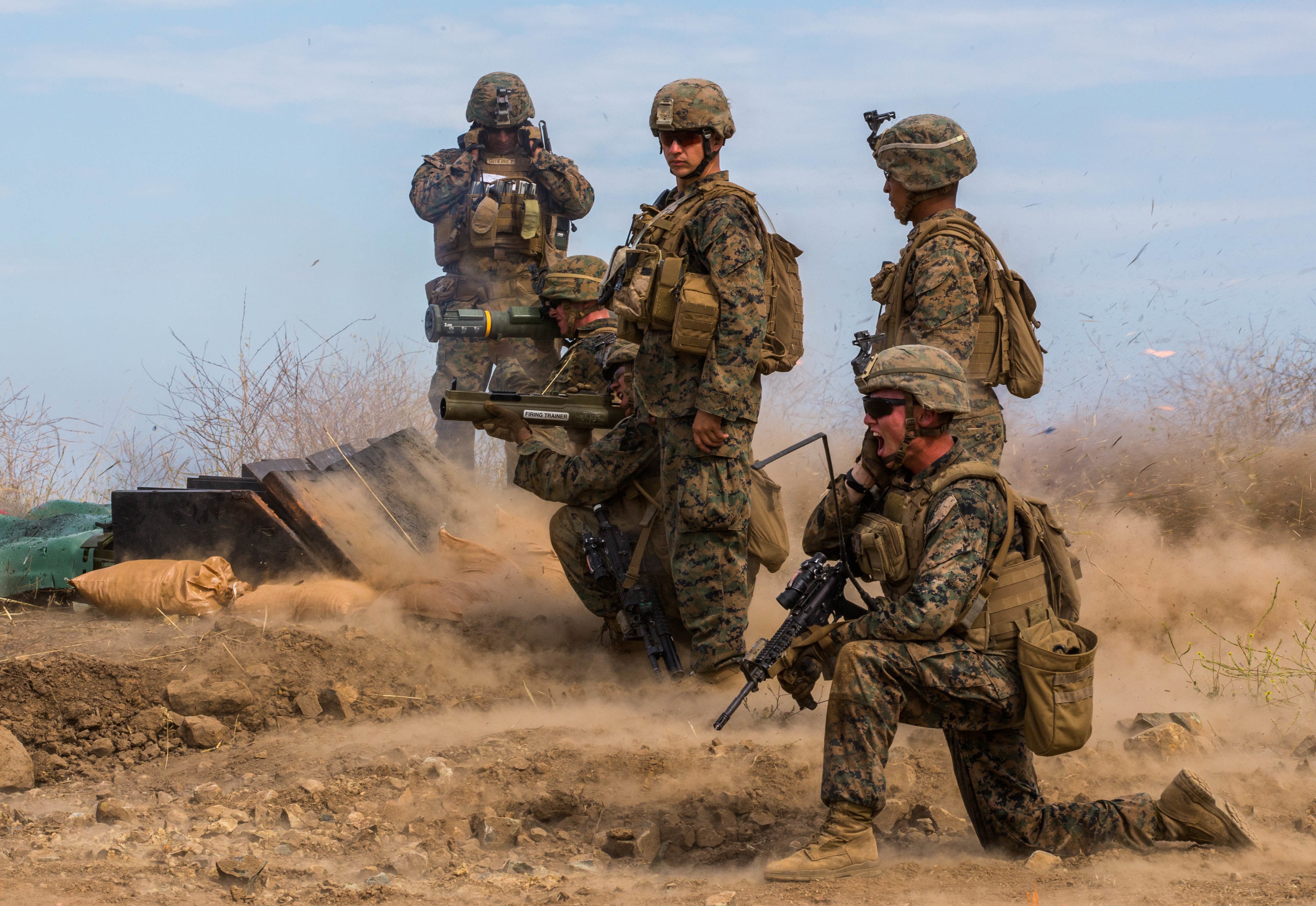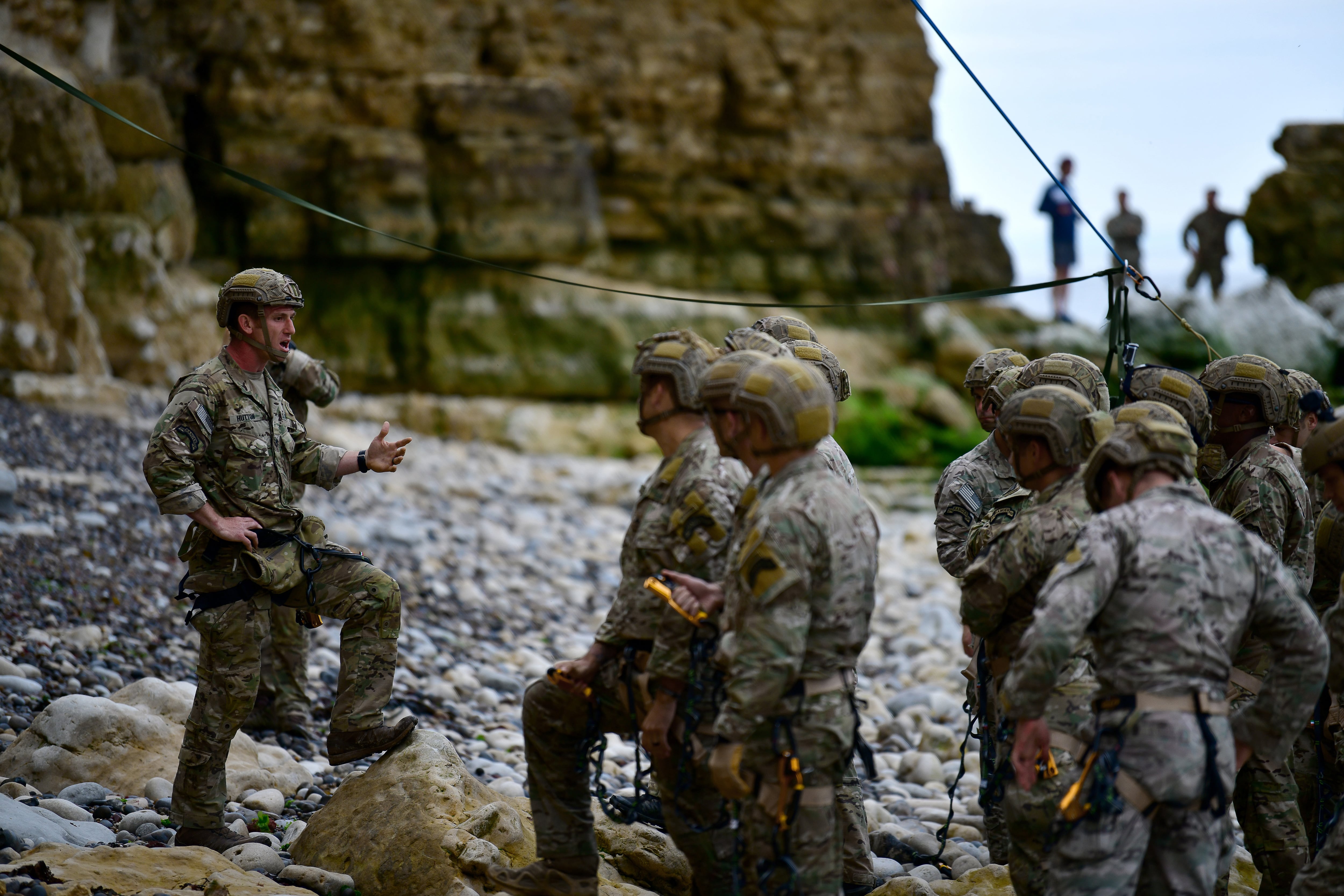The Close Combat Lethality Task Force has been in existence slightly under two years but has already seen its efforts bear fruit for the force most likely to make contact with the enemy and face the consequences.
Task Force director Joe L’Etoile, a retired Marine infantry officer, and retired Army Maj. Gen. Robert Scales, a partner in its founding, recently spoke with Army Times about the work of the task force now and in the future.
The director said the “buy-in” across the services and other entities has created real momentum for the close combat enterprise.
RELATED

And that enterprise includes joining efforts and focusing attention on the equipment, recruiting, retaining and training of the “close combat 100,000” that make up those service members in the infantry, special operations and associated forces such as scouts and engineers who are at the edge of the tactical space.
“I believe squads are at an inflection point, technologically,” L’Etoile said. “Squads of the near future will be highly enabled, have access to a joint panoply of fires, they will have exquisite situational awareness which allows for the vision of distributed operations as both a tactical advantage and as an answer to adversary precision long range strike that is just really right there on the horizon.”
For most of the first year, the task force put its weight behind equipment improvements. Those ranged from lighter but tougher helmets, better fitting and better protecting body armor, a new rifle, better weapons optics and small soldier-borne sensors.
“What’s really exciting now,” L’Etoile said, “is that stuff is being fielded.”
While the pursuit of overmatch on the gear side will continue, late last year the task force shifted its gaze to the human potential. Namely, they’ve been harnessing data to better understand who might make it through the rigors of close combat and also who might thrive.
That’s included efforts with Combat Capabilities Development Command in the Army and their pilot program soon to launch fully fledged MASTR-E, or Monitoring and Assessing Soldier Tactical Readiness and Effectiveness, and the development of a squad lethality metric.
Researchers working with the CCLTF are combing through more than one million data sets from the Tailored Adaptive Personality Assessment System to better understand how to improve accessions, MOS assignments and other information on individual troops.
Some efforts have already seen adoption. The CCLTF was an early advocate for reducing or ending non-lethality focused training events that took time away from basic soldiering and squad preparation. Then-Secretary of the Army Mark Esper echoed similar statements to the Army, seeking ways to reduce the non-combat load on commanders.
They’re also seeing data-based solutions being used to better identify when an individual might reach a point of failure in a rigorous training cycle, injecting the right kind of training to get them through or bringing them back for another chance at that particular pipeline.
“That’s smart human capital management,” L’Etoile said.
By using those interventions they’re keeping people in the training pipelines they might have otherwise lost simply because of one bad training event or day of training.
Early data is showing that of those re-inserted into training following a failure with such interventions, as many as 70 percent go on to complete the course.
Scales told Army Times that there are models to pursue. He sees the close combat force as a group of service members that should be seen much as the nuclear Navy was when it was built in the early stages of the Cold War.
“I can’t think of another cut out and effort like this to focus on a specific defense problem,” Scales said.
The retired two-star said that while getting the gear solutions going was crucial for advancing overmatch, truly transforming the personnel side will be as important but more difficult.
The Army cut its teeth on operational reform with Air Land Battle, he said. But tactical reform hasn’t come as easy.
“Before the task force came along, it wasn’t cool to talk about tactical reform,” Scales said.
Higher level commanders often relegated that to the lower ranks, he said.
“Oh, that’s sergeants’ business,” Scales said.
So to support those units and commanders, the services, specifically the Marines and Army, and their leaders seem to have taken note and incentivized the infantry squad leader position like hasn’t been seen in a generation or more. A combination of increased six-year enlistments, retention bonuses for qualified squad leaders and ways to keep them in the job longer have led to improvement in the numbers.
L’Etoile said that a little more than a year ago, the Marine Corps was showing data that only one-third of their squads were being led by Marines with both the appropriate grade of E5, experience and qualified squad leader training.
In that time span, the service has pushed that to half of all squads. L’Etoile didn’t have an exact timeline but said in the near term the number should be able to reach 90 percent.
What that does for commanders is allow them to do their jobs.
The retired infantry officer pointed out that often it’s at the company level where a commander has the first opportunity to practice both direct and indirect leadership at a larger scale.
But when the majority of squad leaders, the commander’s lowest level of leadership, are not at the level they need to be, that draws the commander down into the ranks more often for direct leadership. But that can consume much of the indirect duties of a commander.
So, one change in the quality and experience of squad leaders can ripple through the unit and the ranks to better improve unit performance.
And at even lower levels, to the individual soldier or Marine, the CCLTF has advocated for resources to improve unit physical performance. That means physical trainers keeping troops fit, preventing injury and bolstering recovery for when troops do get injured.
Nutrition specialists and physical trainers at the battalion level can have a multiplier effect on the performance of a unit and the longevity of the troops in that unit.
“This has really reaped some amazing statistics in the number, severity and time of injury recovery,” L’Etoile said.
Todd South has written about crime, courts, government and the military for multiple publications since 2004 and was named a 2014 Pulitzer finalist for a co-written project on witness intimidation. Todd is a Marine veteran of the Iraq War.
